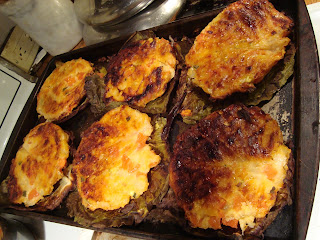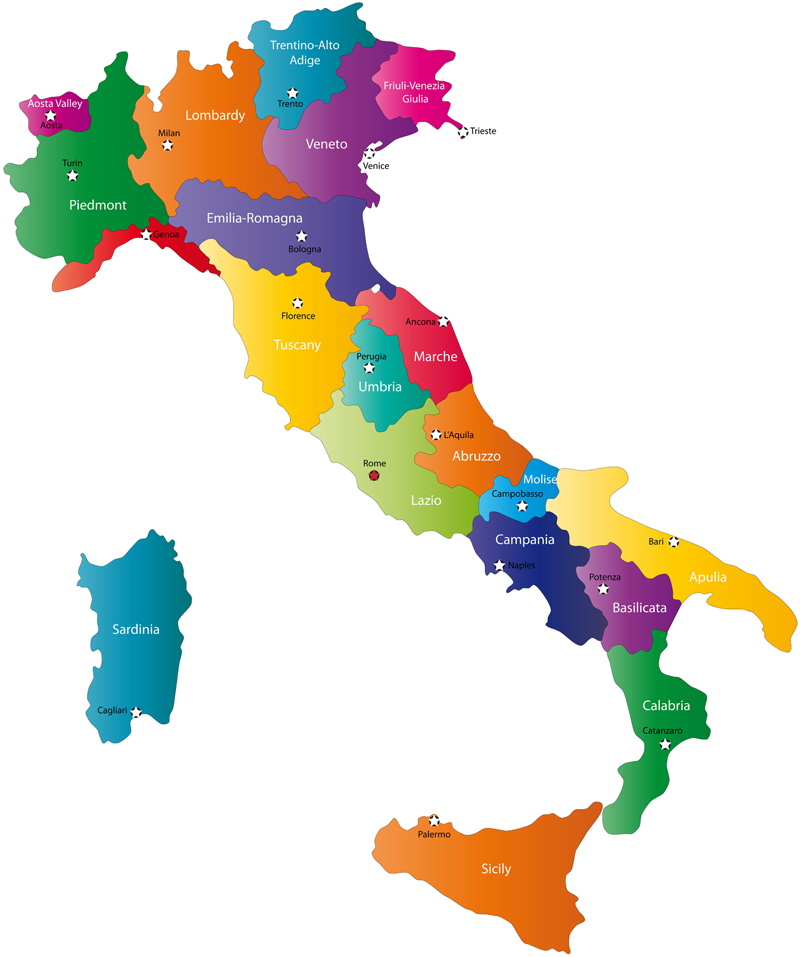This meal was not nearly as successful as my first stab at Italian cooking a week ago. I made the entire thing pretty much on my own this time, and it involved a kitchen full of smoke, a small meltdown, extremely frustrating dough, a few missing ingredients, and overall relatively gross dishes.
The day started relatively calmly. I grated a huge amount of pecorino cheese, steamed some spinach, and mixed them with eggs and saffron to make the filling for my stuffed pasta.
To make the pasta I followed the same steps as last week, only with more eggs and no oil. When I tried to roll the pasta dough out it repeatedly stuck to the table, no matter how much flour I used. After about half an hour of struggling with the seemingly ruined pasta dough I became extremely frustrated and had a meltdown. I declared the dough useless and gave up.
My mom didn't believe that it was destroyed, and saved the day by bringing me a pasta maker. I didn't want to use it at first, because I can be very stubborn and wanted to prove my cookbook wrong by hand rolling pasta as an American, but I begrudgingly used it and it worked great.
When the pasta was all cooked I added some pesto that we made from our garden basil and garlic over the summer. My parents claimed that they enjoyed the stuffed pasta, but I thought that the pecorino flavor was way too intense, and didn't really like the way they turned out.
The zucchini dish was the only thing I liked from my Sardinian meal. It was incredibly easy to make. I sauteed the zucchini slices in a little oil, and then added sugar and white wine vinegar. It was refreshing and really tasty.
The onion pizzas were very interesting to make. Rather than making dough and putting pizza toppings on it, the dough and pizza "toppings" were all mixed together, and then baked on top of cabbage leaves.
I unfortunately underestimated the amount of time it would take to bake these, so even though they were meant to be the antipasti, they weren't done until well after dinner was over. My mom thought they were delicious, but I thought they were very strange and slightly bland.
For the dolce dish I had a bit of a problem with missing ingredients. The recipe calls for grappa, which I obviously can't buy on my own, and I completely forgot to get butter when I went shopping, so I had to wait for my dad to come home from work with the necessary ingredients. To make this batter I mixed water, butter, and almost a dozen eggs.
Frying these fritters was a big challenge for me. I heated up the oil way too much, and the kitchen filled with smoke and smelled awful. My brother opened to doors for ventilation, so I was cold, smokey, and frantically attending to hot oil and fritters.
The fritters appeared golden brown on the outside so I thought they were done, but when I cut holes in them to inject the honey and grappa mixture, I found raw dough. I think the reason for this was that I put to much batter in the oil at one time. I doubt I will try this recipe again, but if I do I will use much smaller fritters.
After the smoke incident, I decided to stop frying. Rather than wasting the remaining dough, my mom and I decided to bake it. When it first came out of the oven it looked perfect, unfortunately it was really late by the time it was done, so we decided to eat it in the morning. When we got to it the next morning it had sunk down, and was basically a dense disgusting slab of buttery egg.
Although this was not the most pleasant kitchen experience I've had, I learned a lot. It was extremely frustrating at the time, but now that it's all over I find the whole disaster to be kind of funny and realize that I can't make a perfect meal every time.






























